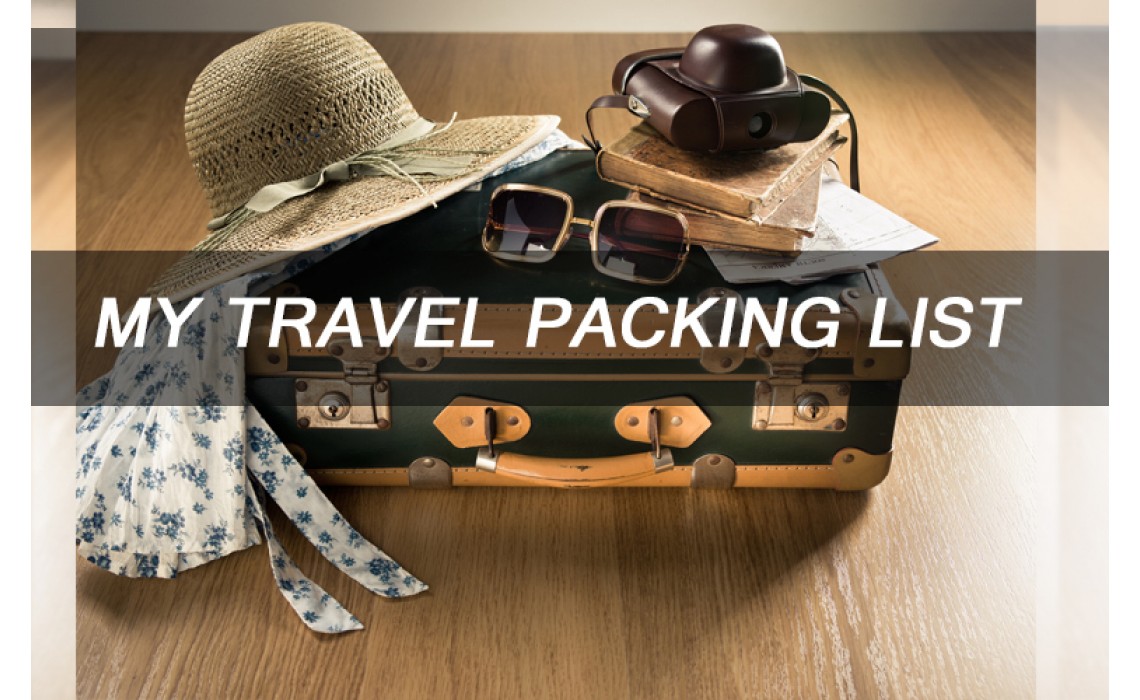
What should we pack to travel ? 5 Steps
Travel is the movement of people between distant geographical locations, which can be empty your mind, get more joyful and enthusiasm to life. So what should we pack to enjoy travel? The right way to take your luggage with these 5 steps below:
Step 1: Choose Your Main Luggage
Wherever you’re planning to go, pick luggage that is versatile, lightweight and big enough to hold all your essentials. The most important decision you’ll make is (as far as luggage is concerned) is buying a bag that has an awesome warranty. Travelling with a piece of luggage with broken wheel, handle or zipper is the absolute worst! Brands that back their gear with stand-up warranties build that promised durability into their gear. It’s also important to find a travel bag that’s as versatile as you need it to be, while also fitting all your stuff and being easy to carry.

Step 2: Start with this clothing packing list:
The Basics
- Lightweight clothing that can be layered
- Belt – Check out this one for an ingenuitive money protection option
- Socks – wool socks are best for hiking
- Comfortable walking shoes
- Rain jacket, windbreaker or umbrella
- Pyjamas/sleepwear
- Underwear
- Sunglasses and glasses case
- Swimsuit or swim trunks – consider a wet/dry organizer
- Travel pillow, eye mask and ear plugs
- Electric converters and adapters
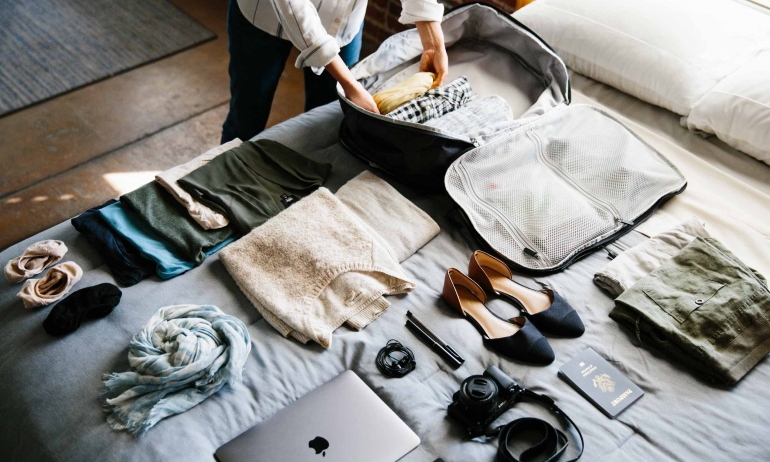
Pack Your Toiletry Bag
If you’re carrying on, keep your toiletry bag light and TSA-compliant. The TSA’s 3-1-1 rule makes it easy to remember: liquids, gels, aerosols, creams, and pastes must be 3.4 ounces (100ml) or less per container and they must be in a 1 quart-sized, clear, plastic, zip-top bag. To make this as easy as possible for you, we have a set that includes four 3-ounce silicone bottles in a quart-sized clear pouch that’s wipeable and has a water-resistant zipper.
Don’t forget the following travel essentials for your toiletry case:
The Toiletry Bag Basics
- Toothbrush, toothpaste, floss, mouthwash
- Hairbrush or comb, hair ties, barrettes/bobby pins
- Shampoo and conditioner
- Sunscreen and face lotion with SPF
- Make up packed
- Face wash and/or makeup remover wipes and q-tips
- Night time Moisturizer/Lotion
- Lip balm with SPF and lipstick or lip gloss
- Hand sanitizer or wet wipes

Step 3: Travel Health
As soon as you decide to travel internationally, check the Center for Disease Control and Prevention’s website for comprehensive travel vaccines, medicines, and travel advisory information. Whether you decide to get vaccinated or not is your decision, but many vaccinations require administration 2 months before travel begins. So get informed!
- First aid kit (bandages, gauze, adhesives, etc.)
- Personal prescriptions (copies of scripts)
- Pain and fever relievers (also children’s strength if you are travelling with kids)
- Thermometer
- Cold medicines and throat lozenges
- Diarrhoea/laxative medicines
- Allergy medicines
- Hydrocortisone cream/antibacterial ointment
- Multivitamins
- Sunburn relief
- Insect repellent/mosquito net/sting reliever
- Motion sickness pills or bands
- Altitude sickness pills (if you are planning to hike in higher altitudes)
- Eye drops
- Moleskin
- Medicines and vaccinations specific to the region/activity

Step 4: Prepare Your Personal Item Carry-On Bag
The next thing you’ll want to do is prepare your personal item carry-on bag with anything you’ll want with you on the flight. It’s always a good idea to make sure you have an outfit (or two) and a few essential toiletries in your personal item just in case your luggage is lost. If you’ll be travelling around to multiple destinations, make sure this bag has items to keep you cozy on any train, boat or bus rides. It’s always nice to have a bag that’s easy to access so you don’t have to get into your luggage each time you need your eye mask. But remember, you’ll be carrying all of this, so keep it light.
We recommend you consider using a small daypack or backpack as your personal carry-on item. Here are some good things to include in your carry-on bag packing list:
Technology
- Mobile device and charger
- Laptop, iPad, or E-reader and charger(s)
- Headphones(consider noise-reducing headphones if you’re sensitive to sound)
- Camera and Go Pro/video camera, memory card, and chargers
- Electrical converters and adapters
Travel Comfort, Entertainment, and Information
- Travel pillow, blanket, eye mask, and ear plugs
- Travel journal and pen (it’s awful when you forget your pen!)
- Books and magazines
- Deck of cards and travel games
- Chapstick and lotion – it’s dry up there
- Water bottle – you’ll need to fill it up once you get through TSA
- Guide books, travel guides, maps, language guides, etc. (if you will need any of these upon arrival at your destination, put it in your carry-on)
Step 5: Collect Important Travel Documents, Cash, and Credit Cards
Start by collecting all of your important documents in a travel document organizer. (This travel organizer holds a passport, ID, credit cards, coins, documents, a boarding pass, and a pen!) By bringing all your important information together, this will help ensure you have everything you need to get from one place to the next. Not sure what you need? Here’s your international travel checklist, document-wise:
- Passport/visa(s)
- Personal ID/Student ID card – If you’re a student, some companies, like Sta Travel, offer discount cards to ensure you get good deals while on the road
- Frequent flyer card(s) and other loyalty program card numbers (ex: hotel chains and AAA)
- Cash and credit card(s) – Call your credit card companies before you travel to inform them of your travel (otherwise they might turn them off to prevent perceived fraud)
- Health insurance cards/document(s)
- Travel insurance information
- Reservations and itineraries – print them and save them electronically for easy access
- Hotel and/or tour contact information
- Transportation tickets (plane, train, bus, car, etc.)
- Emergency contacts and important addresses
- Copies of all these things in case you lose your wallet
- Guide books and maps

As soon as you book a trip, it’s a good idea to double-check that your passports and IDs aren’t expired, and that they will not expire while you are travelling internationally. You’ll also want to inform your bank if you’re travelling abroad so they don’t assume fraudulent activity and freeze your credit card. Also consider emailing yourself a copy of your passport, driver’s license, medical cards and itinerary, so if anything happens to them you’ll be able to access them online.
After these 5 steps, just ready your time and enjoy your trip.
Related products
Production DescriptionDouble Negative Ions: The GLAMFIELDS hair straightening brush seals the hair cuticles and locks in your hair's natural moisture, to eliminate frizz, split ends, and knotting and adds shine, repairing the hair quality of harm, making a smooth, silky, natural lustrous look.Advanced MCH technology: Characterized by Heat Quickly, Save Energy, More Durable, Lasts Longer,it heats up within 30 seconds after boot, wider and denser comb tooth also decreases the time of straightening.16 Heating Modes: 16 heating modes (170℉-450℉) make it suitable for all hair types and volumes, and provide total control for all hair condition and styling needs. It is perfect for a whole family, adults or children, women, and men. You can always find the right settings with the GLAMFIELDS professional straightener.Easy To Use & Travel Friendly: Small Size with 360 rotating handle, which is easy to operate with one hand to reduce the pressure of the wrist, the international dual voltage 110-240V with extra compatible adapter perfect for travel and vacation.SAFETY IS GLAMFIELDS'S TOP PRIORITY- Powered by heat heat-resistant protective plate, heat-resistant glove, anti-burning shell, and 60 min auto-off, GLAMFIELDS guards your safety in every second. Use only on dry brushed;Please Note:If you leave the buttons still (unpressed) for 5 seconds, all buttons of the device are automatically locked; press the power button twice constantly to unlock.The Best Tips for Straighten Your Hair (IMPORTANT):❤ Use only on dry brushed; ❤ Cover less hair in one stroke once for thick and curly hair;❤ Brush Slowly in a pulling motion; ❤ Make Sure your hair gets deep into the inner area of the brush.Specifications: Heater: Metal Ceramic Heater (MCH)Temperature range: 330°F to 450°FWarm-Up Time: 30 secondsAutomatic Shutoff: 30 Minutes360°Rotate Swivel Power Cord: YesVoltage: 120–240V ACFrequency: 50 -60 HZPower: 45W Package Including:1 x Hair Straightening Brush1 x Heat Resistant Glove1 x Cleaning brush1 x Cloth Bag1 x User Manual..
Add to CartGLAMFIELDS Electrical Heated Irons Hair Straightening brush1. GLAMFIELDS Updated Version. Negative Ions for Your Healthy Hair ---The GlAMFIELDS Hair Straightener Brush releases rich negative ions that give your hair a smooth, silky, natural lustrous look by sealing the hair cuticles- reducing frizziness, split ends, and knotting. Most important, our straightening brush will give you natural healthy silky looks rather than flat burnt look, which is easy to manage anytime and anywhere.About the product2. Faster Heating with Advanced MCH Technology --- 30-40 Seconds Heat Quickly, less than one minute. MCH(Metal Ceramic Heater) is new heating standard for hair appliance. Compared with traditional straightener brush, such as PTC heaters, our ceramic straightening brush saves energy, more durable, lasts longer, significantly reduces overall straightening, hair styling time. And with wide and dense brush tooth, it straightens your hair quickly.3. 12 Adjustable Heat Temperatures Levels --- The GLAMFIELDS hair straightening brush offers 12 different temperature setting from 250°F to 450°F, and fulfill all your needs for various hairstyles and conditions, including thin, thick, curly, fine, bleached and wavy. LED screen display shows the temperature function.4. Auto Off & Auto Temperature Lock --- This straight hair brush is equipped with the auto shutdown and temperature lock features to ensure maximum security and optimum performance at all times. Temperature lock ensures that there is no abrupt rise in temperature that can harm the hair. The electric hair brush auto shuts off if it is not used for continuously 30 minutes thereby preventing any energy wastage and prolonging the life of the machine as well.5. Easy to Use & Travel-Friendly--- Small Size with 360 rotating handle, which is easy to operate with one hand to reduce the pressure of the wrist, the international dual voltage 100-240V with extra compatible adapter perfect for travel and vacation. [Warranty: Our GLAMFIELDS supports 3 months Money Back and 1-year guarantee and friendly, easy-to-reach support.]Achieve the Sexy & Mysterious, Beauty You want!GLAMFIELDS Hair Straightener Brush with Faster Heating MCH Ceramic Technology & Double Negative IronsDo you take a long time to manage your hair every day thus wasting your time?Most hair straightening brushes take a long time to heat up. If you get your hair straightened through a flat iron means spending hours in front of the mirror until you get it finally done! Steal away the moisture? Burns accidentally? It maybe can lead to weakened hair, split ends? It is so bad! Our GLAMFIELDS hair straightener brush can help you do your cluttered hair and make a clear look within 10 minutes before going out. Better hair protection!Why Choose US?---Heat up quickly, Preserves natural moisture, Keeps the volume of the hair intact, Better hair protection, Safe for use.---No time wasting, No fatigue at Salon, No burning on your hair, No pain No hurt to your scalp and hands.---The straightening brush releases rich negative ions that give your hair a smooth, silky, natural lustrous look by sealing the hair cuticles- reducing frizziness, split ends, and knotting. With MCH technology, it heats up within only 30-40 seconds thus saving time and energy.---Anion Technology: Straighten Your Hair, Eliminate frizz, Add Shine. Infrared rays lock in your hairs natural moisture and give your hair a smooth, silky, natural lustrous look by sealing the hair cuticles.Specifications:●Negative Ions-Hair Protection●Heater: Metal Ceramic Heater (MCH), 30 seconds heat up quickly●Auto Shut Off & Auto Temperature Lock Function(30 Minutes)●12 Adjustable Temperature Setting for different hairstyles.●Suitable for all kinds of hair condition and hairstyle●Temperature Range: 250°F ~ 450°F / 120℃ -230℃●Anti-Scald Comb Teeth●360°Rotate Swivel Power Cord●International Voltage: 120–240V AC●Frequency: 50 -60 HZ●Power: 68WInnovative technology, Fashionable Design & EfficiencyMCH Technology & Professional Ceramic CombHeat Quickly, Save Energy, More Durable, Lasts Longer, The Advanced MCH technology can heat up within 30~40 seconds,wider and denser comb tooth dramatically also decrease the time of straightening.Universal dual voltage 110-240Vto deliver the same outstanding performance perfect for travel and vacation around the world.Safe & Anti-ScaldDesigned with a circle of non-heated teeth around the hairbrushhead to prevent scalding; each heating tooth has an anti-scald tip so to avoid damaging the scalp or skin when using the brush. Our GLAMFIELDS straight hair brush also comes with an anti-scald glove included for added safety.360 Swivel Power CordThis compact straightening brush comes with a 360 rotating handle that helps you operate with one hand with utmost convenienceTemperature ControlThe Glamfields ceramic straightening brush offers four different temperature levels for you to choose from. You can set the temperature levels on the brush from 170 degree Celsius to 230 degree Celsius to meet your styling needs.The Best Tips for Straighten Your Hair (IMPORTANT):♚ Not waterproof. Don't immerse it in water or clean it under running water. You can use a brush stained with alcohol and clean.As alcohol is highly volatile, it disappears quickly and does not cause damage to the instrument in any manner.♚ There is residual heat after using the device, so it is best to keep it in the open for some time before storing it safely.♚ When the LCD shows "LOC", it means that the buttons are locked, you need to double-hit the power button to unlock.Then you can adjust the temperature or press the power button for 2-3 seconds to switch off.♚ According to the multi-volume and curl of hair, there would be necessary to divide the hair into handful clumps for straightening.Easy to Use, Compact Size, Perfect for TravelingNegative IonsRich negative ions can be eliminating frizz, split ends, knotting and adds shine, repairing the hair quality of harm. Make a more natural smoother and healthier look compare to the flat burnt one...
Add to Cart【Extended Size & Easy to Use】: A larger size, plus a comfortable non-slip grip, allows for effortless and easy usage. The curved blade's edge creates the best fit along with the shape of nails, you can precisely trim your fingernails and toenails.【Razor-Sharp Blades】: Through repeated sharpening and polishing procedures, the blade edges of the nail clipper are perfectly aligned against each other, with no gaps in between. Nails are sleek and smooth after clipping, with no more tearing or jagged nails, thanks to the remarkably sharp blades.【Anti Splash Nail Clipper】: Fingernail clipper with catcher which features a storage box design to prevent nails from splashing everywhere in process of nails clipping for easily clean them up and keeping your room neatly.【Sharp & Precise Curved Blades】: Sharp stainless steel blades allow you cut with little effort to cut thick toenails and will not tear or split nails, With the precise curved nail clipper blades edge makes more easily trimming nails smoothly and well-groomed for your fingernails or toenails. Easily and perfect clipping in every time!【Perfect After-Sales Service】: If GLAMFIELDS nail clipper has any defects or if you are not satisfied with it, we will refund or ship you a brand new nail clipper...
Add to Cart

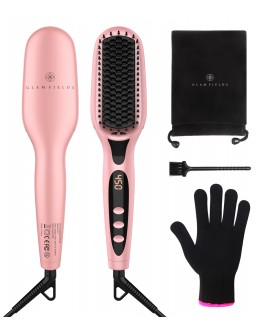
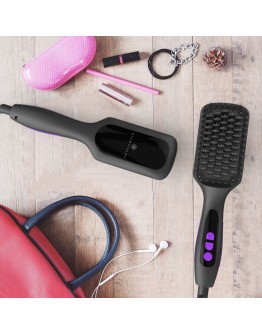
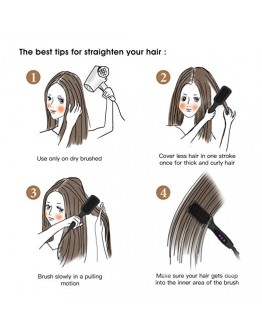
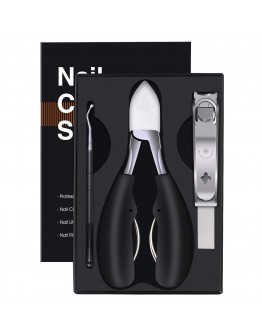
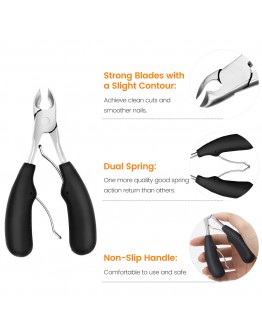





-60x76.jpg)
-60x76.jpg)

















